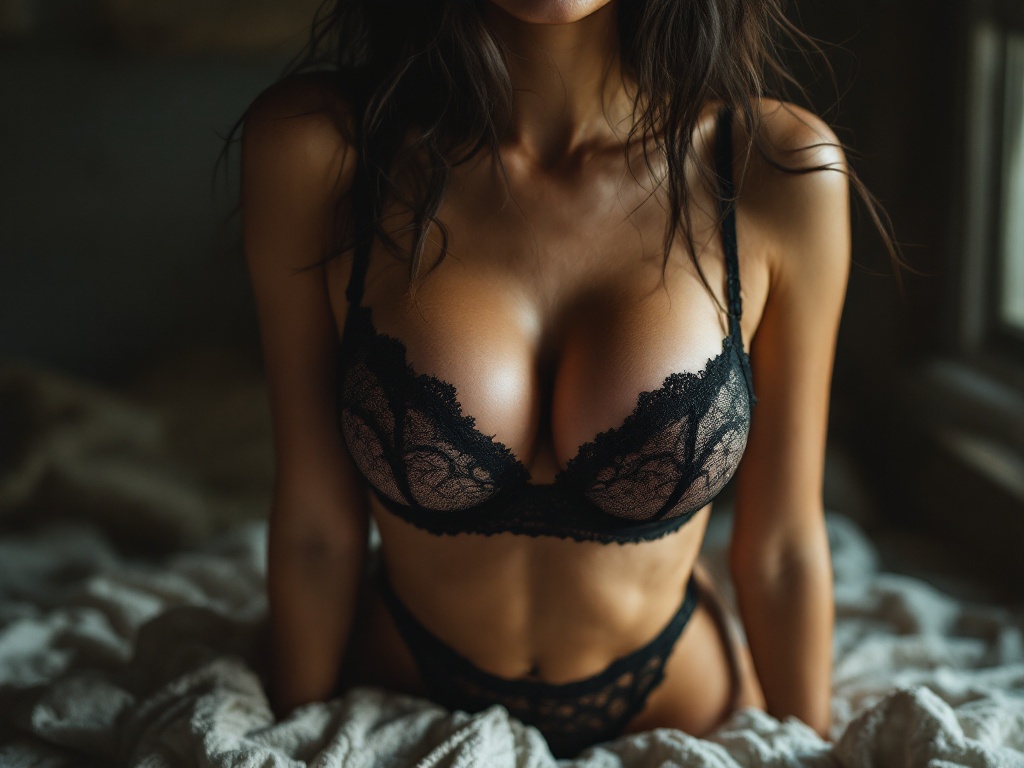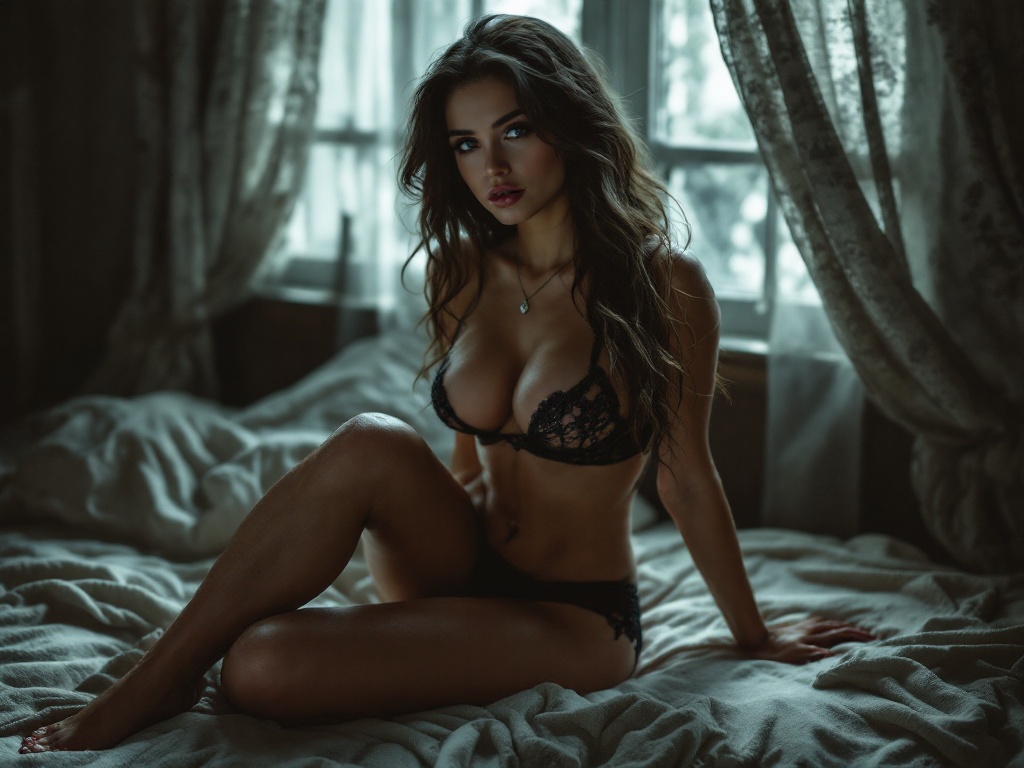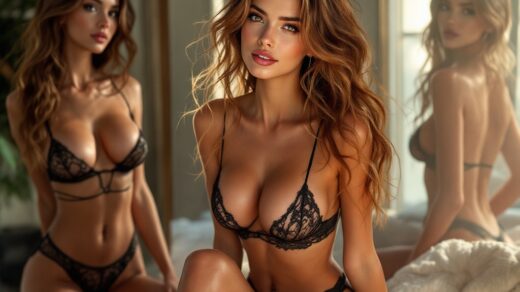In an era increasingly defined by the convergence of technology and creativity, artificial intelligence (AI) is revolutionizing how we engage with visual culture, particularly when it comes to more intimate expressions of the human experience. The realm of erotic visual culture, characterized by its bold and often provocative artistic expressions, is no exception. Artists, audiences, and technologists alike stand on the cusp of a transformation that could redefine eroticism in art. The integration of AI technology not only enables new forms of creation but also introduces complexities that challenge our perceptions of authenticity, consent, and representation. As we explore the multifaceted impact of AI on this specialized genre, it becomes essential to consider both the opportunities it presents and the ethical dilemmas it raises.
With the rapid advancement of AI tools, the landscape of erotic visual culture is evolving. No longer confined to traditional mediums like painting and photography, eroticism is now experiencing a shift toward digital expressions, where AI-generated content thrives. This transition prompts a reevaluation of what we define as art and challenges established norms surrounding erotic expression. The intertwining of AI and eroticism offers tremendous potential for innovation, yet it also invites scrutiny regarding the implications for artists and audiences. Thus, a thorough examination of this intertwining is necessary to understand where it may lead society in the future.
Understanding Erotic Visual Culture

To grasp the significance of AI’s impact on erotic visual culture, one must first understand what this culture encompasses. Erotic visual culture refers to artistic representations that explore sexual themes and fantasies. Historically, erotic art has served as a reflection of societal attitudes towards sexuality, ranging from ancient sculptures to contemporary digital art. Over the years, the freedom to express sexuality through art has faced restrictions, yet it continually finds new avenues for exploration and expression. Today, this genre is more accessible than ever, allowing diverse voices to contribute their unique perspectives. As AI becomes more prevalent, the scope of erotic visual culture expands, leading to intriguing possibilities for artistic innovation.
Various factors have contributed to the evolution of erotic visual culture, including technological advancements, sociopolitical movements, and shifting cultural norms. Each of these elements plays a crucial role in shaping how sexuality is depicted through art. As we consider the influence of AI, it’s essential to recognize how this technology aligns with ongoing changes within society. The way we perceive eroticism may be transformed not only by visual content but also by the very processes of creation and consumption that AI innovations enable.
The Role of AI in Visual Arts

AI technologies are revolutionizing the visual arts landscape, allowing unprecedented enhancements in creativity and production. While this change spans various art forms, the intersection with erotic themes presents unique opportunities. Artists are beginning to incorporate AI into their workflows, utilizing algorithms to generate intricate designs and explore new aesthetic directions. As these technologies evolve, so too does the potential for creating erotic visual content that is not only provocative but also thought-provoking. In doing so, AI challenges the traditional methods of creation and nudges the envelope of what can be considered erotic art.
| Traditional Methods | AI-Enhanced Techniques |
|---|---|
| Painting | AI-generated imagery |
| Photography | Deep learning algorithms |
| Sculpture | 3D modeling tools |
| Printmaking | Digital manipulation |
Transforming Creativity and Expression
The incorporation of AI into the artistic process is notably transforming how creators express themselves, especially in the realm of erotic art. AI allows for a rapid exploration of concepts and aesthetics that might otherwise take considerable time and effort through traditional methods. Artists are now equipped with tools that can generate ideas or even entire pieces based on various input parameters. This process not only accelerates creativity but can also lead to innovative interpretations of sexuality and desire that resonate with contemporary audiences.
Moreover, AI is contributing to what many consider a democratization of artistic creation. With user-friendly software and applications, individuals lacking formal artistic training can explore their desires and fantasies through AI-generated erotic art. This shift encourages participation from a broader range of voices, which can lead to richer and more varied representations of eroticism. As a result, the barriers that once held many potential creators back are gradually dissolving, paving the way for a more inclusive artistic landscape.
The rise of AI-generated erotic imagery presents its own set of complexities. As algorithms have become proficient at creating visually striking content that mimics human artistic styles, audiences have begun to question what authenticity means in this context. The response to AI-generated erotica has been varied, with some praising its originality and others expressing concern about its lack of emotional depth. Audiences may find comfort in knowing that technology is fueling creativity, yet the question remains: Does AI-generated art possess the same emotional resonance as work created through human experience? This discourse is vital as we navigate the evolving relationship between human artists and their AI counterparts.
Ethical Considerations
While exploring the benefits of AI in erotic visual culture, we must also address the ethical considerations that come into play. As creators embrace these new tools, concerns about consent, representation, and potential misuse of AI-generated content arise. It is crucial for all participants in this space to engage in wise practices and discussions surrounding the implications of their work. Understanding these ethical challenges will not only shape the future of erotic art but will also influence how we perceive and interact with AI itself.
Consent and Representation Issues
A significant concern surrounding AI-generated erotic content is the issue of consent, particularly the challenge of depersonalization. The very nature of AI, which often utilizes existing images and data to generate new content, raises questions about whether individuals represented in these outputs have given their consent for their likeness to be used. Furthermore, representation within erotic art must reflect the diversity of human experiences and identities. Failure to consider these aspects could perpetuate harmful stereotypes or narrow depictions of sexuality in ways that could have societal repercussions.
The Risk of Deepfakes
Another critical ethical issue is the risk posed by deepfake technology, which can create hyper-realistic representations of individuals in explicit contexts without their knowledge. This poses profound implications for privacy, integrity, and consent, as it undermines trust in visual media. In the context of erotic content, deepfakes exacerbate existing tensions surrounding the portrayal of identity and agency. As creators and consumers navigate this challenging landscape, awareness and a robust discourse around these technologies’ potential ramifications are necessary to mitigate harm.
The Future of Erotic Visual Culture
Looking forward, the integration of AI in erotic visual culture heralds a new chapter marked by both creative possibilities and ethical challenges. As technology advances, we can anticipate innovations that will further enhance artistic expression, such as virtual reality (VR) and augmented reality (AR) experiences. These technologies will allow audiences not only to engage with erotic visuals in more immersive ways but also to actively participate in the creation of their experiences. We can expect to see a shift in how eroticism is perceived and engaged with through AI-driven platforms, prompting discussions that transcend traditional boundaries.
Innovations on the Horizon
Emerging technologies promise to redefine artistic engagement with erotic themes. With advancements in AI development, we may witness:
- Real-time rendering of personalized erotic experiences in VR environments.
- AI-curated content that learns from user interactions to tailor visual narratives.
- Collaborative platforms that allow users to create erotic art together with AI assistance.
Shifts in Audience Engagement
As AI transforms erotic visual culture, audience engagement will shift significantly. The ways in which viewers interact, respond, and contribute to erotic art will evolve. Community dynamics around these artworks are likely to become more interactive and collaborative, blurring the line between creator and consumer. As people begin to embrace AI-assisted tools in their artistic expression, a new, inclusive environment could emerge. This communal sense of creation may foster a deeper exploration of eroticism, making it more relatable and accessible to wider audiences.
Conclusion
The impact of AI on the future of erotic visual culture is profound and multifaceted. While it ushers in a wave of creative potential, it also challenges us to confront pressing ethical dilemmas. From consent issues and representation to the risk of deepfakes, the landscape is fraught with complexities that require thoughtful consideration. As audiences and artists navigate these changes, the essential dialogue surrounding the implications of AI in erotic art remains crucial. Ultimately, the future of erotic visual culture will be shaped by how we balance innovation with ethical responsibility, ensuring that the artistry within this genre continues to resonate authentically with our shared human experience.
Frequently Asked Questions
- What is erotic visual culture? Erotic visual culture encompasses artistic expressions focused on sexual themes, including photography, painting, and digital media.
- How is AI being used in erotic art? AI is used to generate images, create virtual models, and enhance artistic processes, allowing for innovative forms of erotic expression.
- What are the ethical concerns regarding AI in erotic visuals? Key concerns include issues of consent, representation, and the potential misuse of AI-generated images like deepfakes.
- Will AI replace human artists in erotic visual culture? While AI can create content, human artists will likely continue to play a vital role in infusing personal expression and emotion into their work.
- How can audiences engage with AI-generated erotic content safely? Audiences should remain critical of the content they consume, seek verified sources, and advocate for ethical practices in AI-generated material.


